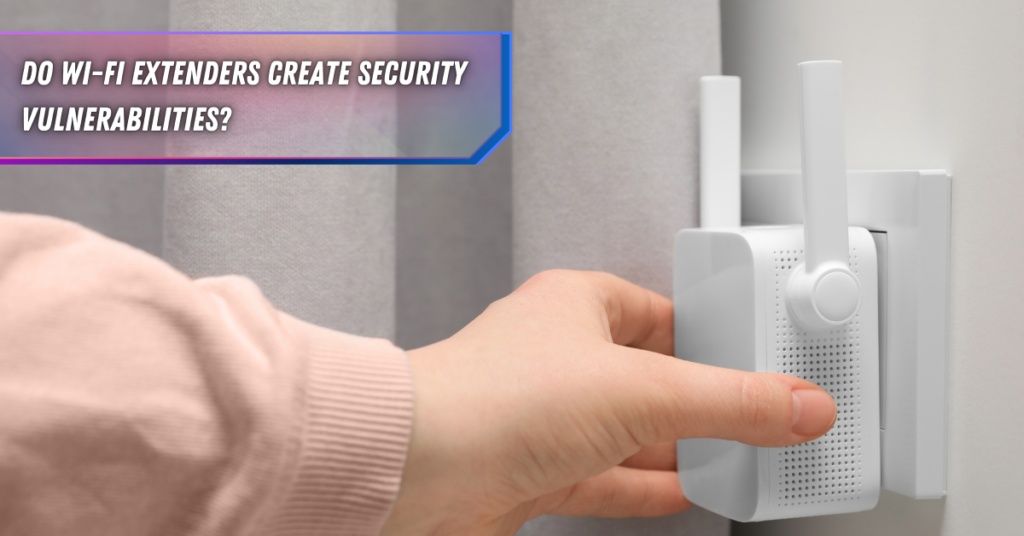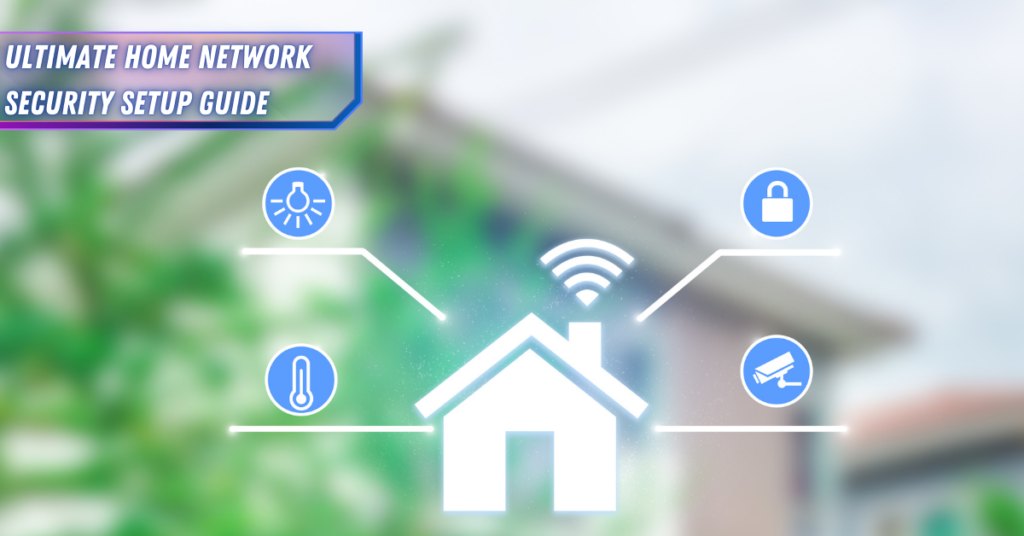Last month, my neighbor learned a harsh lesson about Wi-Fi extender security when their device got hacked, exposing everything from doorbell camera footage to banking sessions. It was a stark reminder that these convenient devices can be a major vulnerability in your home network.
Here’s the thing: WiFi extenders are everywhere these days. They’re cheap, easy to set up, and promise to solve those annoying dead zones in your house. But there’s a dark side to these handy gadgets that most folks never think about until it’s too late.
Our blog post will guide you in protecting your network from these threats. Stay safe online.
Key Takeaways
- Wi-Fi extenders can have firmware flaws and weak encryption, making them easy for hackers to exploit. For example, a recognized vulnerability in TP-Link extenders allowed attackers full control over the device.
- Using strong encryption methods like WPA2 or WPA3 on your network devices is crucial. Older security protocols such as WEP are not safe against modern hacking tools that can break these encryptions quickly.
- Regular firmware updates are essential for keeping your Wi-Fi extender secure from attacks. Device manufacturers often release patches to fix vulnerabilities that could be exploited by hackers.
- Implementing strong password policies adds another layer of defense against unauthorized access. It’s recommended to use complex passwords that mix uppercase and lowercase letters, numbers, and symbols.
- Changing default login credentials for both Wi-Fi routers and extenders is key to preventing easy hacks. Keeping factory settings allows hackers easier access to your network.
What Are the Main Security Risks of WiFi Extenders?
Let me tell you something that keeps me up at night: most WiFi extenders are about as secure as a screen door on a submarine. I’ve seen it firsthand in my home lab testing – these devices often have security holes you could drive a truck through.
Firmware flaws
The biggest issues? First off, many extenders run ancient firmware that hasn’t been updated since Obama was president. Manufacturers pump these devices out and forget about them, leaving you vulnerable to every new security threat that comes along.
Default Passwords
Then there’s the password situation. I can’t tell you how many times I’ve seen people leave their extender’s admin password set to “admin123” because they figured, “Hey, it’s just an extender, right?” Wrong. So very wrong.
Weak encryption methods
Many Wi-Fi extenders use weak encryption methods, such as WEP or outdated versions of WPA. These older security protocols can make your network an easy target for hackers. Cybercriminals have tools that crack these encryptions in minutes. To keep your Wi-Fi safe, always use strong encryption like WPA2 or WPA3 on both your router and extender
But here’s what really keeps security pros awake at night: man-in-the-middle attacks. Your extender sits between your devices and your router, happily passing along all your data. If it gets compromised, it’s like having a spy in the middle of every conversation you have online.
How Extenders Can Compromise Your Entire Network
Remember my neighbor’s situation? The hackers didn’t just access their extender – they used it as a springboard to infiltrate their entire network. It’s like giving someone a key to your mudroom and finding out they can now access every room in your house.
Here’s what typically happens in these attacks:
- Hackers gain access to the poorly secured extender
- They use it to monitor all traffic passing through
- They grab passwords and sensitive data
- They spread malware to other devices on the network
- Before you know it, they’ve got access to everything
I’ve seen cases where compromised extenders were used to:
- Steal banking credentials
- Access security camera feeds
- Harvest email passwords
- Mine Cryptocurrency
- Launch attacks on other networks
Choosing a Secure WiFi Extender
After years of testing different models, I’ve learned that not all extenders are created equal. When I’m helping friends choose an extender, here’s what I look for:
First, stick with reputable brands. Yes, that $15 extender from “SuperSecureNetworks123” might look tempting, but trust me – you’ll regret it. I only recommend models from ASUS, TP-Link, NETGEAR, and similar established brands.
Look for these specific features:
- Regular firmware updates (check their update history)
- WPA3 support (this is non-negotiable in 2025)
- Automatic update capabilities
- Secure boot features
- Network isolation options
And please, for the love of all things digital, never buy a used extender. You don’t know what kind of firmware or malware might be installed on it.

Best Practices for Securing Wi-Fi Extenders
This is where most people mess up, so pay attention. When I set up an extender, here’s my step-by-step process:
- Change all default passwords immediately:
- Admin interface password
- WiFi network password
- Any other available security credentials
- Disable unnecessary features:
- Remote management (unless you absolutely need it)
- UPnP (Universal Plug and Play)
- WPS (WiFi Protected Setup)
- Configure security settings:
- Enable WPA3 encryption if available
- Set up MAC address filtering
- Enable any available firewall features
- Create an update schedule:
- Check for firmware updates monthly
- Document when updates are installed
- Set up automatic updates if available
Related: 10 Essential Steps to Secure Your Home Network- A Complete Guide
Best Practices for Extender Placement and Use
Location matters more than you might think. I learned this the hard way when I found out someone was connecting to my extender from the parking lot outside my apartment.
Here are my tried-and-true placement rules:
- Keep extenders away from windows
- Position them centrally between your router and dead zone
- Avoid placing them near large metal objects
- Consider mounting them higher up for better coverage
Pro tip: I actually turn off my extender when I’m away for extended periods. Yes, it’s a bit paranoid, but it’s better than becoming another statistic.
| Related: WiFi Extender vs Mesh Network: Which is Best for Your Home
Alternatives to Traditional WiFi Extenders
After seeing so many extender-related security incidents, I often recommend alternatives:
- Mesh Networks
- More expensive but far more secure
- Easier to manage
- Better coverage overall
- Powerline Adapters
- Use your home’s electrical wiring
- More secure than wireless extenders
- Can be faster in some situations
- Dedicated Access Points
- Professional-grade solution
- Better security features
- More reliable performance
My personal favorite? I switched to a mesh system two years ago and haven’t looked back. Yes, it costs more upfront, but the security benefits alone made it worth every penny.
Wrapping Up: Your Action Plan
Don’t let your WiFi extender become the weak link in your network security chain. Here’s what you need to do today:
- Check your extender’s model for known vulnerabilities
- Update all passwords and firmware
- Review your placement and security settings
- Consider upgrading to a more secure solution
Remember my neighbor? They ended up switching to a mesh system too. Sometimes it takes a wake-up call to realize that saving a few bucks on network equipment isn’t worth the risk to your digital life.
Want to learn more? I recommend checking out the WiFi Alliance’s security guidelines and your extender manufacturer’s security documentation. Just remember: in the world of network security, an ounce of prevention is worth a pound of cure.
FAQs
1. What are the security risks of using a Wi-Fi extender?
Wi-Fi extenders can pose additional security risks as they create another access point on your wireless network that could be exploited by hackers. A critical vulnerability with Wi-Fi extenders has been found, especially in devices from popular router companies like TP-Link.
2. How do Wi-Fi extenders work and why does it make my network vulnerable?
Wi-Fi extenders work by receiving the existing Wi-Fi signal from your router and rebroadcasting or transmitting the boosted signal to extending the coverage area. This creates an additional access point that might not have proper security settings, making it prone to hacking attempts.
3. How can I secure my WiFi extender against potential attacks?
To secure your WiFi extender, change default login credentials, use strong passwords avoiding common words for better security, enable access control features and consider using separate networks for guests rather than connecting them to your main network.
4. Can updates help protect my Wi-Fi extender from vulnerabilities?
Yes! Manufacturers often release updates or patches to fix known vulnerabilities in their products including routers and WiFi boosters. Regularly updating your device’s firmware will help minimize risk of getting hacked.
5. Is there any alternative solution that is safer than using a wifi extender?
Using ethernet cables or mesh networks provide better network security compared to traditional wi-fi repeaters as they offer more secure connections reducing chances of privacy breaches.
6. Are all brands of wifi-extenders equally susceptible to these threats?
While researchers from IBM have found a critical vulnerability specifically in TP-link devices; it’s important to note that any device connected to internet including other brands’ wi-fi extenders could potentially be at risk if not secured properly.



